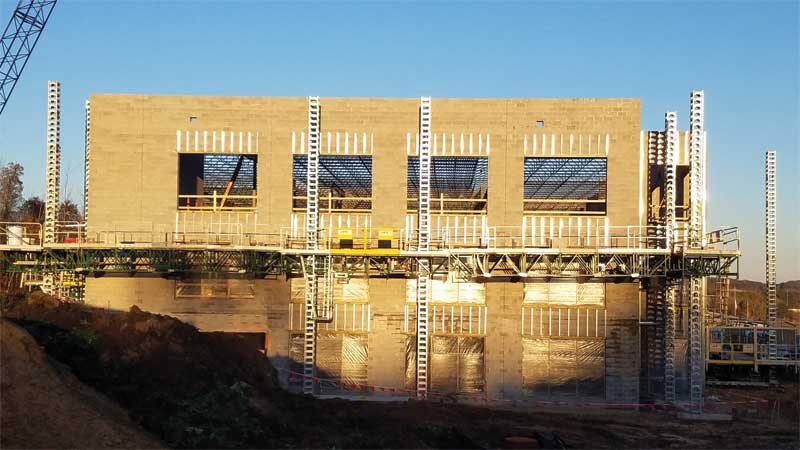
by Pat Conway, CSI, AIA, Sam Rubenzer, PE, SE, and David Sovinski
Structural masonry saves time and money while providing a durable solution for building design. Masonry has outstanding load carrying and transfer capabilities but is too often relegated to veneer, infill, or over-designed structural elements. This creates an inefficient construction delivery system and misuse of material, which can negatively impact cost, schedule, and space. All parties in the design and construction process benefit from understanding the basic and advanced principles of structural masonry and how they are applied.
This article discusses uses of masonry systems, from total building solutions and hybrid solutions with steel or concrete frames to partial solutions such as stairs, shafts, fire walls, and foundations. Other considerations include relative costs, scheduling implications, important detailing, and performance issues, as well as the use of simple software packages to create the most effective structural system.
Useful resources for non-engineers
Codes, standards, software, and industry support are readily available to help engineers and non-engineers alike make effective use of structural masonry.
Codes and standards
The Masonry Society (TMS) 402/602, Building Code Requirements and Specification for Masonry Structures, includes both mandatory and optional checklists, which offer guidance for specifiers and help ensure project specifications meet code. The mandatory list includes required specifications, like the minimum compressive strength of the masonry for a specific project. The optional list includes considerations like the use of joint reinforcement as shear reinforcement.
ASTM standards are another resource. ASTM C90, Standard Specification for Loadbearing Concrete Masonry Units, is commonly used for projects requiring loadbearing concrete masonry. It sets minimum requirements for the units. In some cases, a designer may specify requirements above the minimums, which can often be done with minor impact on the unit cost. If specifications do not reference the version of the standard, by default, the version referenced by local building codes will be used.
Though ASTM C90 sets the minimum compressive strength requirement for the units, it does not set a maximum. Often, it is advisable to specify a higher unit strength, which can result in a higher compressive strength for the masonry wall itself.
Manufacturers and distributors
One can check with local concrete masonry manufacturers and distributors for locally available unit strength and options for high-strength units.
Structural masonry coalitions
There are more than a dozen regional structural masonry coalitions around the country offering free engineering support, as well as providing education, software, training, and conceptual design. The coalitions have proven to produce lower cost designs, and in some cases, thinner masonry wall systems resulting in delivery efficiencies. (To inquire about coalition availability in one’s area and for more information, contact the International Masonry Institute [IMI] at 1.800.IMI.0988 or at imiweb.org/4-contact.)




